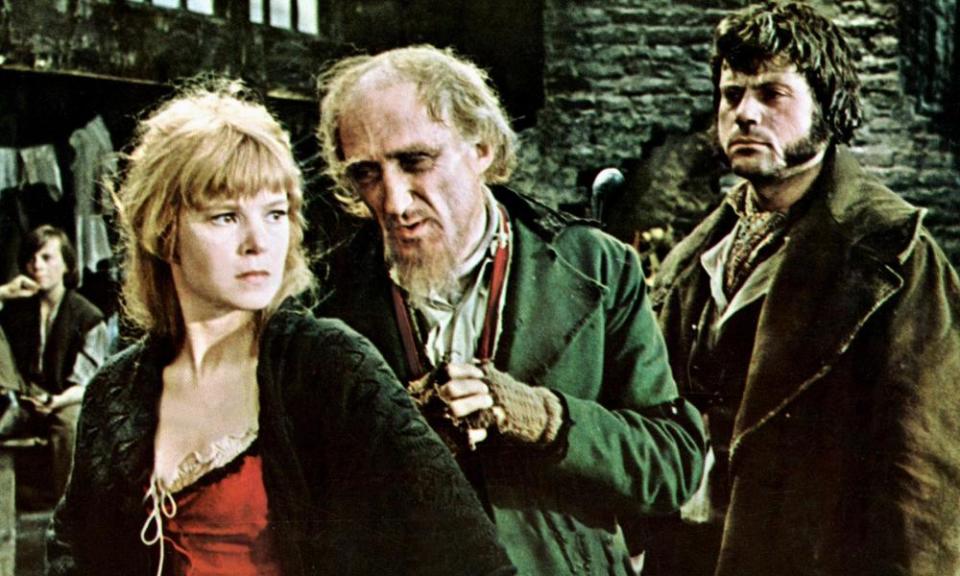Revealed: how Dickens’ Nancy became a battle between ratings and realism

Nancy, Oliver Twist’s only true ally in the backstreets of Charles Dickens’ London, is the big-hearted “fallen woman” at the emotional core of one of the best-loved stories in the English language. Yet Dickens was unsure just how “coarse” to make her portrayal, it is revealed this month with the publication of the original manuscript of the 1837 novel to mark the 150th anniversary of the great writer’s death.
Unseen edits in Dickens’ manuscript, printed for the first time with all its surviving pages by SP Books, in a collaboration between the Charles Dickens Museum and the V&A, show how Dickens pulled back from painting Nancy too garishly. His campaigning instinct to depict the lives of poverty-stricken Londoners realistically seems to have battled with a desire to keep the more moralistic readers of his hit episodic novel on her side.
“Nancy is just wonderful,” said Professor Jenny Hartley, academic adviser to the Charles Dickens Museum in central London. “Who else but Dickens could have given you that picture of a life like that then?”
The mistreated girlfriend of Bill Sikes, Fagin’s violent associate, Nancy looks out for the boys in Fagin’s pickpocket gang, as well as earning money for Sikes by walking the streets.
“Quite soon after the story was printed in episodes so successfully under the pseudonym Boz in Bentley’s Miscellany magazine, Dickens wrote a preface to an 1841 edition spelling out clearly that Nancy was a prostitute, something he doesn’t say in the book,” said Hartley.
Although she is pimped and abused she has real joie de vivre. She is not just a victim
Prof Jenny Hartley
Initial descriptions cast the character in brightly coloured green and red clothing and mention a raucous laugh. But, perhaps fearing these features would lose Nancy the sympathy of the average Victorian reader, the author cut both from later versions, passing her outfit of “red gown, green boots and yellow curl-papers” over to her friend and drinking partner, Bet, and dropping “the fit of loud laughter”. He also gradually refined the language she used.
In the introduction to a 1966 edition of the book, Kathleen Tillotson had pointed out that “the Nancy seen by the readers of Bentley’s was thus rather coarser and more violent” and now it is clear what was altered.
Ironically, in versions of the story since made for stage and screen, it is Nancy’s crowd-pleasing, earthier qualities that are often emphasised.
“He just had such sympathy for these young women, right from his earliest journalism,” said Hartley. “In The Prisoners’ Van, one of his 1835 articles, published as Sketches by Boz, he describes seeing two sisters, ‘gaudily dressed’, being picked up by police, one ‘who has not yet attained her 14th year’ and her elder sister of around 16. He notes how upset the younger girl is, but he writes that she will soon be hardened, like her sister.”
Dickens is best known for creating demure and passive heroines, such as Little Nell from The Old Curiosity Shop or Esther Summerson from Bleak House, and so Nancy has always stood out.
“As a character she has extraordinary energy,” said Hartley. “Although she is pimped and abused she has real joie de vivre. She is not just a victim and I think Dickens was on to that modern idea early.”
Not content with campaigning through his writing alone, in 1847 the author set up a home to help young women who were working the streets and try to reform them. He believed that if he could reach them before they became reliant on drink, there was a chance to change their lives.
The newly collated pages that first told the powerful story of a well-meaning but doomed prostitute were nearly lost to posterity. When Dickens left Bentley’s Miscellany after an argument, he left the manuscript behind. Most of the pages came to light years later when the premises were cleared after the author’s death in 1870. The 474 folios containing 22 chapters of Oliver Twist were then auctioned by Sotheby’s and bought by Dickens’ friend John Forster, who left them to the V&A. Now they appear together with a manuscript leaf from Chapter 10 from the Charles Dickens Museum.

